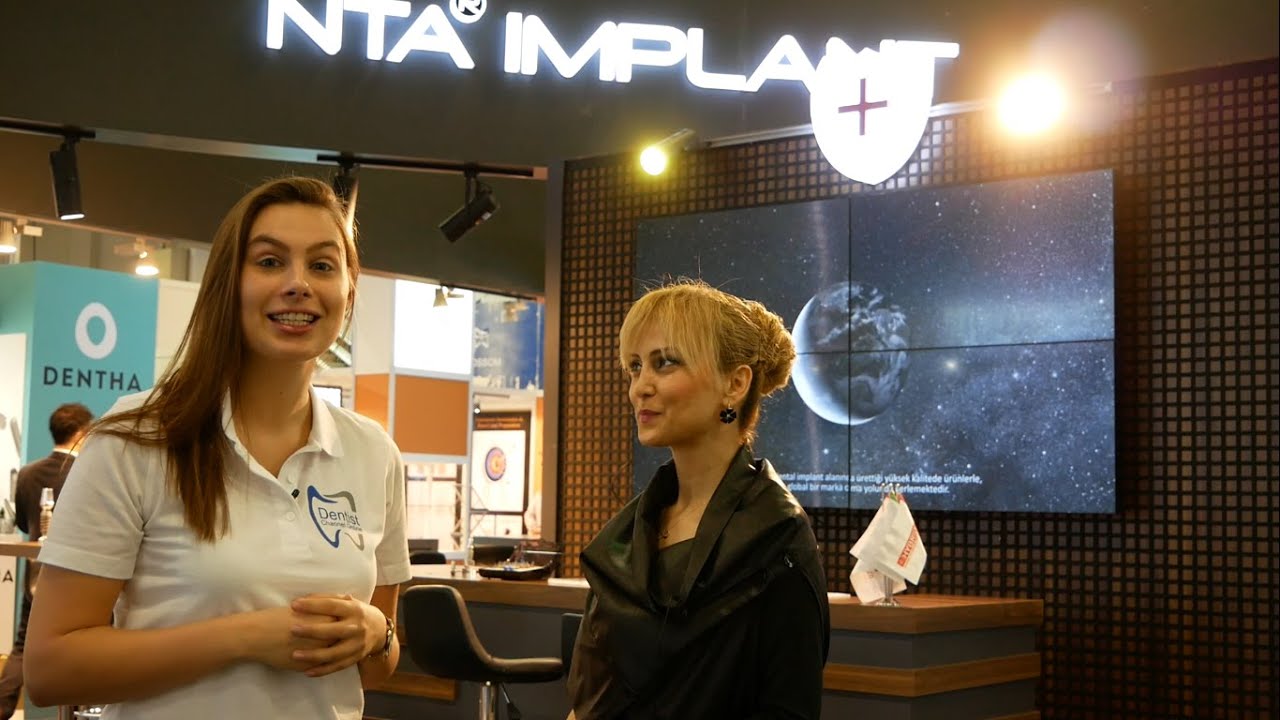
 Dentist Channel Online
Dentist Channel Online
NTA implant at IDS 2019
NTA implant offers highest quality dental Implants with state-of-the-art technology. NTA holds Quality System Management certificates of all their products like FDA, CE, ISO 9001: 2015, ISO 13485: 2016 and ISO 10002: 2014 quality control certificates. NTA manufactures “Screw-type” and “Press-fit” implants with their accessories NTA Implant, NTA Shorter Implant, NTA Shorter Plus Implant and Hybrid Implant.
The research and development, production and surface finishing of NTA products are carried out by their partners in SWITZERLAND, SOUTH KOREA, USA and FRANCE. Some of their solution partners have over 35 years of experience in dental implant industry.
The prime motive of NTA Implant is to produce impressive products with wide product range including all dental implant indications by using safe, effective and reliable treatment methods without compromising on high quality.
Their vision is to bring the latest innovations in dental field together with scientific innovations and to provide their patients with high quality products.
UNIQUE FEATURES OF NTA IMPLANTS.
Platform Design– Smaller platform compared to many designs allows platform switching.
Conical Connection with Hex 11° Index – Conical connection provides bacterial seal and prevents microleakage issues at implant-abutment interface. Internal hex index ensures proper seating of the abutment.
Upper Thread- Taper thread on the straight body provides even distribution of the load and exerts the stress on the implant. Lower depth of upper threads helps to promote vascularisation on the cortical bone area and therefore reduces the time required for healing and new bone formation.
Apex– The rounded apex may reduce the risk of tissue damage, especially when placing the implant into maxillary sinus sites
Body Design– The body design preserves the advantages of straight and tapered type implants that guarantees initial stability with overall stability.
Single Pitch Macro Thread– Synchronized thread Preferred design for SLA surface & High fixture strength.
Corkscrew Thread– Superior self-threading Ensures Easy path change with High primary stability.
Helix Cutting Edge– Superior self-threading & Easy path change
Apical design- Self-drilling ability Increases initial stability in the presence of insufficient bone quality and volume.
Why makes NTA implants different from Other Implants?
The SLA surface is produced by a large grit sand-blasting process with corundum particles that leads to a macro rough- ness on the titanium surface. This is followed by a strong acid-etching bath with a HCl at elevated temperature for several minutes. This produces the fine 2–4 μm micro pits superimposed on the rough-blasted surface. The surface is not micro porous and therefore provides no enclosed volumes to reduce vulnerability to bacteria. The chemical composition of the SLA structure was found to be titanium oxide (TiO2) using X-ray photoelectron spec- troscopy. This method analyses the first few atomic layers of the surface, and thus the chemical composition of the material which is in direct contact and interacts with tissue fluids and cells.
Range of Products from NTA implants:
NTA Fixture
NTA Short Fixture
Abutment
Healing Abutment
Solid Abutment
Milling Abutment
Cemented Abutment (Hex)
Cemented Abutment (Non-Hex)
Multi Abutment
T-Base Abutment
Multi Angled Abutment
Angled Abutment (Hex)
Angled Abutment (Non-Hex)
Octa Abutment
Esthetic Abutment
Temporary Abutment
Ucla Abutment
Overdenture Restoration
Ball Abutment
N-Locater
Impression Coping
Octa Abutment Impression Coping
Transfer Impression Coping
Pick-Up Impression Coping (Hex)
Pick-Up Impression Coping (Non-Hex)
Lab Fixture Analog
Solid Lab Analog
Impression Plastic Coping
Plastic Coping
Octa Abutment Impression Coping
Octa Abutment Lab Fixture Analog
Surgical Kit Instruments
Surgical Kit & Instruments.
For more enquires or product related information log on to

Hailey - 9 months ago